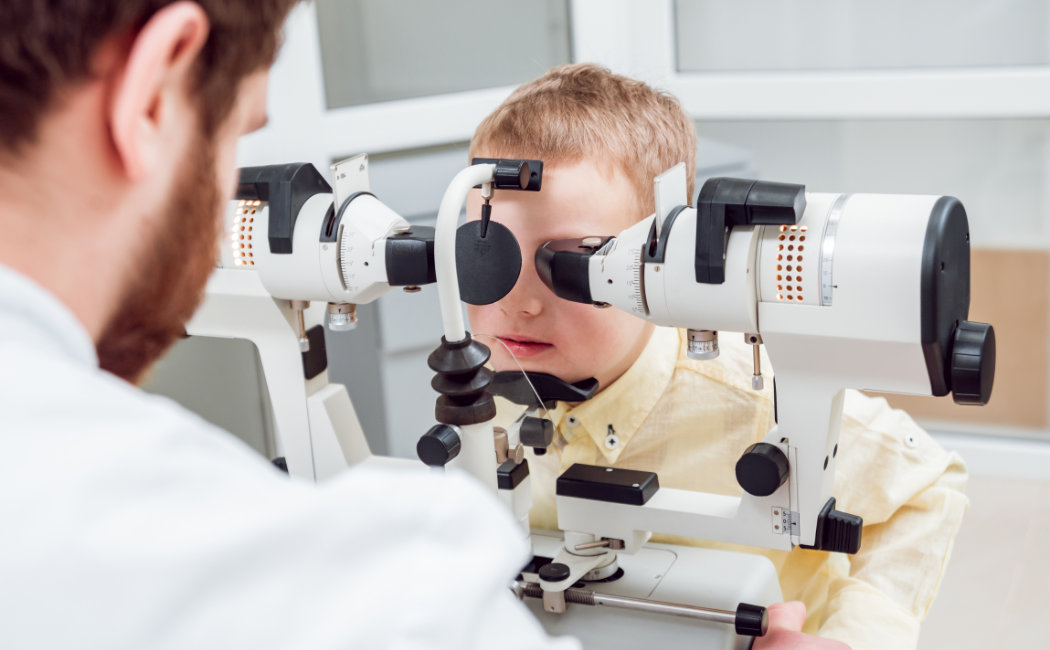
Strabismus
The strabismus is caused for a muscular imbalance, is the loss of the parallelism of the eyes. The two eyes do not look at al same place, one of them directs the look al object that fixed, while the other deviates in another direction.
Although it is a frequent condition that affects to a 4% of the childlike population, can appear subsequently during the life. The deviation can be permanent and always appreciable, or can go and to come, seeming normal some times and abnormal other. Also it can be large and then constitutes a gaudy esthetic defect, but there can be cases where the deviation is very small and itself is not appreciated.
Aside from the important esthetic problem that represents, results when is a matter of children less than 5 years, in the development of the vision of the devious eye, what is called Ambliopía, best-known by vague eye.
Often the parents that do not detect the strabismus without the aid of the ophthalmologist, since in many occasions is difficult to differentiate between two eyes that seem to be misaligned and a true strabismus.
Normally the small children present the base of the wide nose, leaving a superficial cutaneous fold simulating that the eye store to be hidden under he and giving us the appearance of a strabismus. Only the ophthalmologist is qualified to differentiate and to distinguish this physiological situation of a real strabismus.
Is common that the newborn crossing the eyes. In few weeks the baby learns to focus well and to move its together eyes. If it continues crossing the eyes from the fourth month, one must consult al ophthalmologist.
Treated
The processing of the strabismus is more efficient during the infancy. The objectives of the processing are the to maintain the visual sharpness, to align the eyes and reestablecer the binocular vision.
- Medical: Variety of processing exists: optical correction, eyeglasses, occlusions with patches, special crystals, prisms, muscular exercises,... all it to try to recover the vision of the vague eye and to improve the action of the muscles.
- Surgical: Cuando When the medical processing is not sufficient and the eyes persist "devious" is necessary to resort to the surgery or the use of botulinic toxin.The surgery can be done on various muscles of the eye, of one only or of the two; and will be able to be performed at times without [Estrabismo] having that to resort al income and the general anesthesia. The results are satisfactory.
The botulinic toxin is a medicine that al is injected eyeball to achieve the progressive alignment of the eyes. They are many benefits and scarce the complications. Their ophthalmologist will indicate the process to continue.
Symptoms
- Deviation of an eye, loss of the parallelism of the eyes.
- Decrease of the visual sharpness of an eye respect al another (vague Eye or amblyopia).
- Abnormal positions of the head, deviations, inclination, stiff neck.
- Dyplopia, or double vision, when the strabismus is initiated in adult age.
- Badly calculation of the distances and reliefs, loss of binocular vision.
Before any doubt, or appreciation of any of these sinthomatology, this ocular defect should be evaluated immediately by an ophthalmologist. The precociousness in the processing can resolve many consequences.
Complications
One must keep in mind that in surgical every process complications can arise. Always it should be reported for its ophthalmologist of the risks characterized for each case.
The most frequent complication is the need of a possible second intervention, to obtain the results desired. Also infections can occur, allergic reactions, quistes in the external zones of the surgical incisions, and, as rarer complications, fall of the upper eyelid or hemorrhages.
Prevention
- The strabismus can appear al to be born but also to any age and by different causes.
- A boy with strabismus, be gaudy or not, should be diagnosed and treated PREMATURELY, to be able to value the causes that produce it, to avoid or to treat the ambliopía (vague eye), and to rule out ocular pathology associate, like cataracts, wounds retinianas inflammatory or tumorales, as well as illnesses of the central nervous system.
- In a strabismus the caution and control should be extended to the adolescence, although the situation esthetics be normal.
- The boy should participate in an active way in the processing, being rigorous in the fulfillment, above all in the first epoch of the ocular occlusions.
